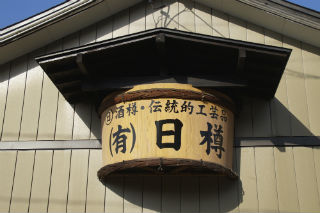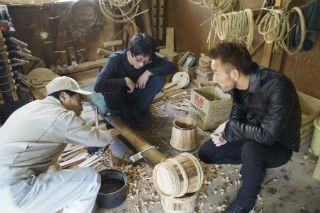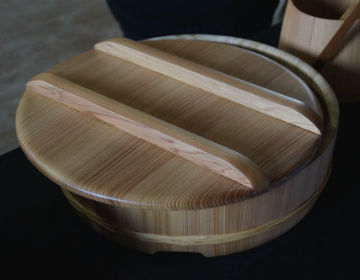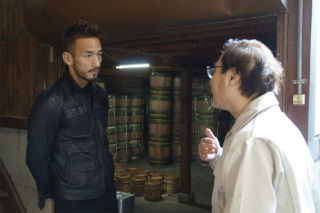 |
Barrel, Tub made with Natural Akita CedarThe most famous craft in Akita is the ”magewappa”. During our trip, we visited a workshop and interviewed people there. ”Magewappa” was designated as Japan’s Traditional Craft in 1980, but 4 years later in 1984 ,the Akita Cedar Barrel and Tub was also designated Japan’s Traditional Craft. We visited Nittaru, a company making Akita Cedar Barrels and Tubs since its foundation in 1930. When we visited, we saw craftsmen busily working with the wood. We met with Yoshio Hikage (age 72), president, a craftsman himself, of Nittaru. In 1980, he quit his job to take after his family business and has been a craftsman since, creating Akita Cedar Tubs and Barrels for more than 30 years. |
Craftwork that is in close touch with people’s livesAs with Akita cedar ”magewappa”, it has a long history. As mentioned in ”the Diary of Masakage Umezu” a minister of the Akita clan, Akita Tubs were used in the ”sake” shops of former Ogachimachi. In fact, the bottom of tubs and barrels have been found in Akita castle ruins from the 15th and 16th Century. However, the origin seems to date further back. From the same Akita castle ruins, there have been tubs dating back from the Heian period. That is approximately 1000 years ago. There are 3 major characteristics of the Akita Cedar Barrel. First would be its appearance. The fine grains of the tree are exquisite and breathtaking. Next is the fragrance. A subtle aroma of ”dignity” can be detected. Lastly it naturally adjusts moisture and degree of salt. The mere fact that it has been in existence for 1000 years is proof that it has been a large part of people’s lives. This also suggests how user-friendly it has been. Perhaps the 3 characteristics of the Akita cedar barrel has cultivated its 1000-year long history. |
 |
|
|
The difference between a ”taru” and ”oke”Nakata asks a simple question. |
ACCESS
- Nittaru
- 17-3 Doi Shakanai Oodate-City Akita 017-0012
- URL http://www.chuokai-akita.or.jp/oketaru/nichidaru/
 Discovering Japan [Nihon] through authentic craftsmanship [Honmono]
Discovering Japan [Nihon] through authentic craftsmanship [Honmono]
